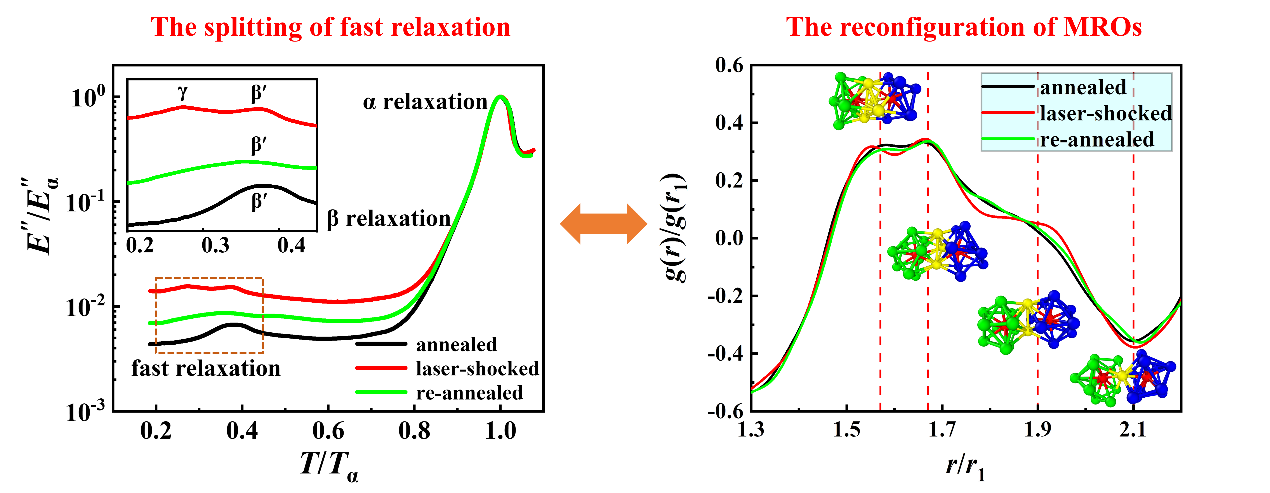Relaxation dynamics of glassy matter is probably one of the deepest and most challenging unsolved problems in condensed matter physics. Metallic glasses (MGs) are considered as simple glasses with dense-packed atoms, thus providing an ideal model for studying glassy relaxation. Recent research has identified an additional fast relaxation below room temperature in MGs, alongside the well-known α and β relaxations. This low temperature relaxation process has lower activation energy and faster characteristic relaxation time than β relaxation and it is closely related to the low-temperature plasticity. Despite numerous research over recent years, the structural origin of fast relaxation remains elusive.
The research team investigate the variation of the fast relaxation in a typical Zr-based MGs by laser shocks and isothermal annealing. The single-peak fast relaxation in the annealed glass is observed to split into two distinct peaks (termed γ and β') after multiple-pulse laser shocks, and this splitting phenomenon disappears after re-annealing. A slight structural rejuvenation of the laser-shocked sample is detected by thermodynamic measurements. The reconfiguration of MROs is captured by HRTEM and high-energy XRD. It turns out that laser shock treatment increases the edge-sharing MROs, which is then recovered by re-annealing. We argue that the fast relaxation originates from the MRO structures, where γ relaxation comes from the edge-sharing type, and the β' relaxation is related to the face-sharing and interpenetrating types. The splitting of fast relaxation is structurally due to the MRO reconfiguration. The simultaneous changes in relaxation dynamics and atomic structure provide solid evidence that fast relaxation originates from the MRO structures. Moreover, the lowest hardness and pile-up of the laser-shocked sample implies that the split fast relaxation improves the RT plasticity of MGs.
The first author of the paper is Cheng Yang, a PhD student of the Institute of Mechanics, class of 2018, and the corresponding author is Professor Minqiang Jiang. This research is supported by the National Outstanding Youth Science Foundation of China under the project of "Mechanics of Amorphous Solids", and by the Foundation's Basic Science Center under the project of "Multiscale Problems in Nonlinear Mechanics".

Fig. 1. Structural origins of fast relaxation: the reversible motion of atoms at the MRO scale.